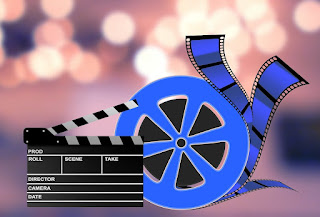James Wood, in his book "How Fiction Works," writes of the challenges of adapting novels to the silver screen:
"The novel is a medium of time, the film a medium of space. The novel can explore the inner lives of its characters in great detail, while the film is limited to what can be shown on screen. This difference in medium can make it difficult to adapt certain novels to the big screen."
Linda Hutcheon shares the same view in "A Theory of Adaptation," writes of novels resistant to the silver screen:
"Some novels are simply too complex or challenging to be adapted into films. They may have multiple narrators, nonlinear storylines, or themes that are difficult to translate to the visual medium. In other cases, the novel's essence may be too closely tied to its language or style to be successfully adapted."
Wood's book is a comprehensive analysis of the art of fiction, and he provides a detailed examination of the challenges of adapting novels to film. He argues that the novel's ability to explore the inner lives of its characters is one of its greatest strengths, but it can also make it difficult to adapt to film. He also argues that the film's limited ability to show what is happening in a character's mind can make it difficult to convey the full complexity of a novel.
Some examples of novels that are resistant to the silver screen include:
"Ulysses" and "Finnegans Wake" by James Joyce
"As I Lay Dying" and "The Sound and the Fury" by William Faulkner
"Absalom, Absalom!" by William Faulkner
"Mrs. Dalloway" and "To the Lighthouse" by Virginia Woolf
These novels are all considered to be masterpieces of literature, but they are also very challenging to adapt to film. They are all characterized by their complex characters, stream-of-consciousness narration, and non-linear plots. These qualities can make it difficult to create a film that is both faithful to the novel and engaging for a general audience.
Consider James Joyce's "Ulysses." This modernist masterpiece delves deep into the inner thoughts and consciousness of its characters, employing a stream-of-consciousness narrative style that defies easy translation to film. The novel's richness lies in the interior monologues of its characters, a facet that is difficult to convey visually without losing the essence of the text.
Similarly, works like William Faulkner's "The Sound and the Fury" and Marcel Proust's "In Search of Lost Time" explore the intricacies of memory and time in ways that are profoundly cerebral. Translating these themes faithfully to the screen is a formidable challenge, as the subjective nature of memory and time cannot be easily captured through traditional cinematic storytelling.
In the case of David Foster Wallace's "Infinite Jest," the novel's sheer length and complexity present logistical hurdles for adaptation. The intricate web of characters, subplots, and footnotes is an integral part of the reading experience, and distilling it into a coherent film narrative would be a formidable task.
Yet, the beauty of these unfilmable novels lies precisely in their resistance to cinematic adaptation. They remind us that literature is not confined to the boundaries of the visual or auditory but can traverse the uncharted territories of the human mind. They challenge us to engage with narrative in ways that go beyond the passive act of watching, encouraging active interpretation and introspection.
Furthermore, the very act of grappling with the limitations of adaptation underscores the uniqueness of each storytelling medium. It prompts us to recognize that literature and cinema are distinct art forms, each with its strengths and limitations. Attempting to translate an unfilmable novel into a film forces us to confront the essence of storytelling and the ways in which different mediums shape our understanding of narrative.
Despite the challenges, there have been some successful adaptations of novels that are resistant to the silver screen. For example, Stanley Kubrick's adaptation of A Clockwork Orange is considered to be a classic film. However, it is important to note that Kubrick made significant changes to the novel in order to adapt it to the screen.
In conclusion, novels that resist easy adaptation into films serve as a reminder of the intricacies and boundless possibilities of literature. They challenge us to engage with storytelling in ways that transcend the visual and demand a deeper intellectual and emotional connection. As enthusist learners, we should embrace the difficulty of these unfilmable novels, for they offer us a profound revelation about the art of storytelling across different mediums, enriching our appreciation of both literature and cinema.
References
How fiction works : Wood, James, 1965- : Free Download, Borrow, and Streaming : Internet Archive. (2008). Internet Archive. https://archive.org/details/howfictionworks00wood
Hutcheon, L. (2012, August 21). A Theory of Adaptation. Routledge.


Comments
Post a Comment
Drop any query, suggestion or comment here.